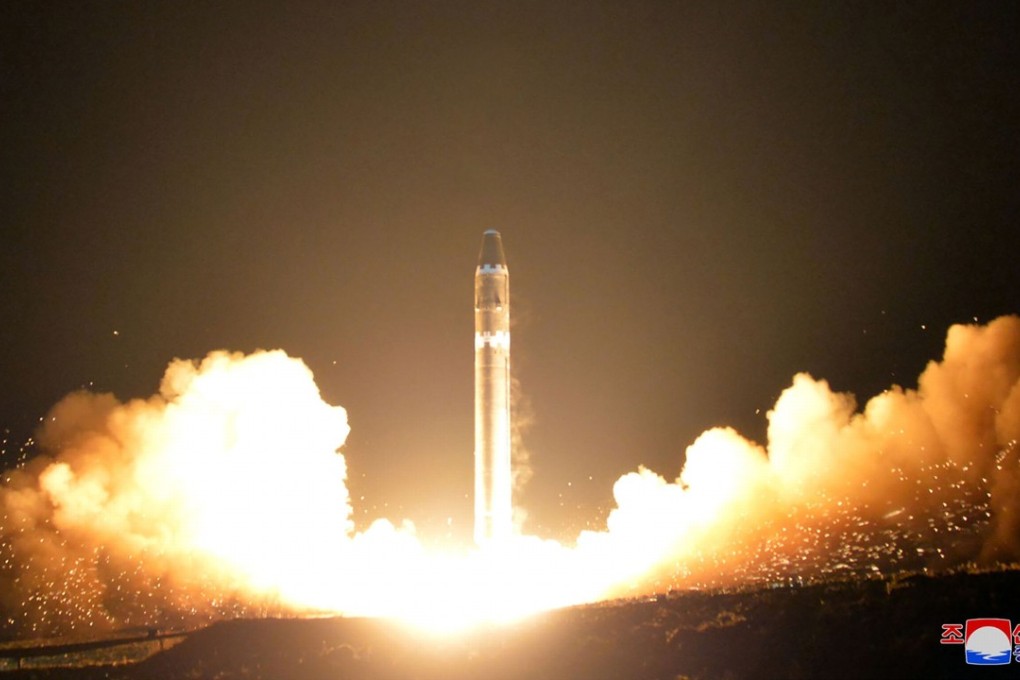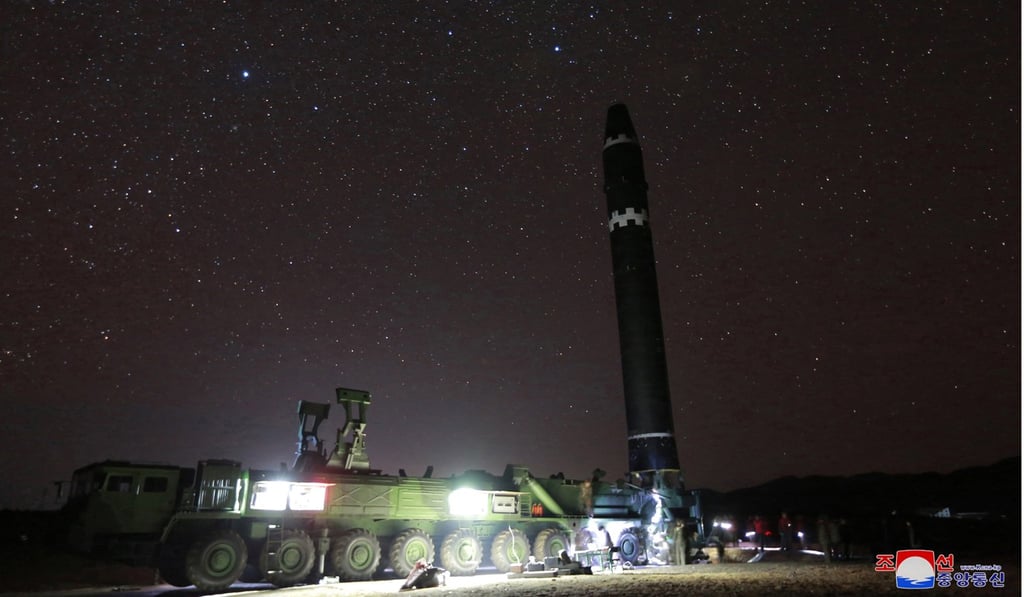Was Kim Jong-un’s ‘historic’ missile recycled Russian weapon technology?

The powerful intercontinental missile tested by North Korea late last year is “highly likely” to have been built with foreign blueprints or parts, according to a new technical analysis that describes several similarities between Pyongyang’s new missile and ones built by the Soviet Union decades ago.
The alleged foreign help – the nature of which is unclear – could explain why North Korea apparently was able to skip months or even years of preliminary testing normally associated with new missile systems, the report by US and German experts says.
The missile dubbed Hwasong-15 had never been seen publicly until its successful maiden test on November 28, when it flew 2,780 miles (4,474km) above Earth in a nearly vertical trajectory before splashing into the Sea of Japan, also known as the East Sea. The 75-foot-tall (23 metres) colossus was one of two long range missiles to appear abruptly on North Korean launch pads last year, and the first with sufficient range to strike any US city.

Intelligence agencies have long believed that North Korea incorporated Soviet designs in many of its missiles, including a submarine-launched missile successfully tested in 2016. But experts have been mystified over North Korean leader Kim Jong-un’s rapid gains in long-range missile technology, including back-to-back successful tests of two different long-range missiles last year. After the November 28 launch, Kim boasted that he had realised “the great historic cause of completing the state nuclear force”.
The new report builds an elaborate though partly circumstantial case linking North Korea’s newest missile to Soviet designs dating as far back as the mid-1960s. The evidence includes striking similarities between the Hwasong-15 and a family of Soviet-era missiles, including one that was developed by Russian engineers but abandoned before production began, according to the report prepared for Jane’s Intelligence Review, a British-based journal that focuses on international security threats.